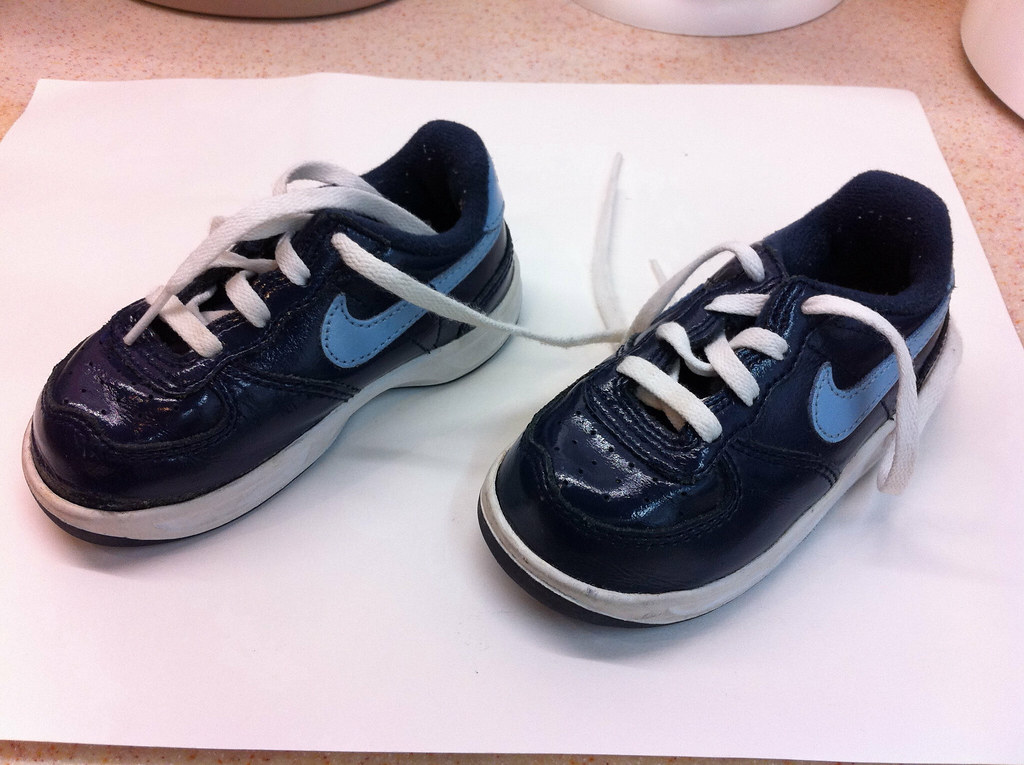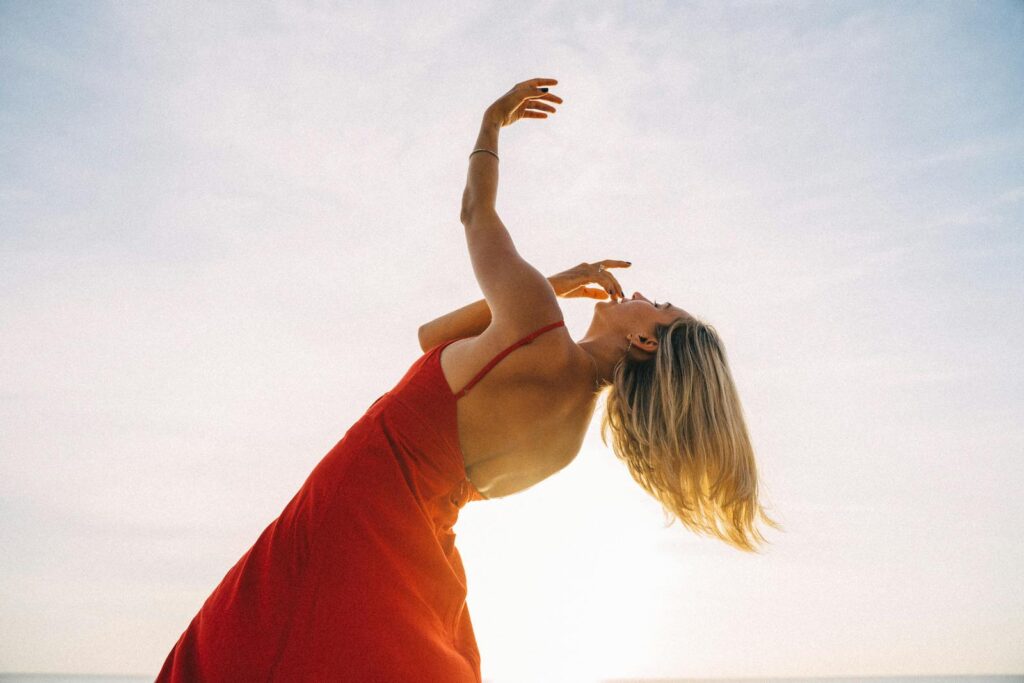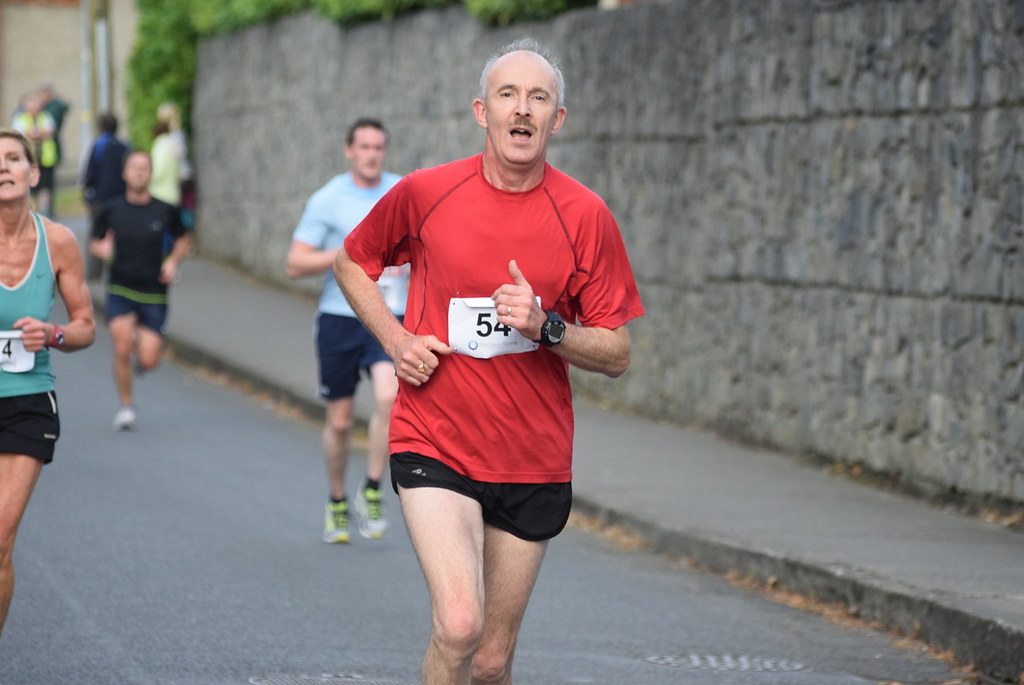
What are the best shoes for your feet? It’s one of the most commonly asked questions podiatrists hear, and for good reason. The footwear you choose has a profound impact on your overall foot health, acting as either a cause or an alleviator of pain. While it’s unrealistic to expect anyone to wear their most supportive footwear 24/7 – after all, comfortable running shoes don’t exactly complement cocktail attire – making informed choices about your everyday and activity-specific shoes is critical, especially when considering long distances. Ignoring this can lead to a cascade of problems, from your feet all the way up your kinetic chain.
Beyond just immediate discomfort, wearing the wrong shoes can contribute to a host of debilitating issues within your feet. We’re talking about everything from irritating blisters and painful corns and calluses to the more serious conditions like ingrown toenails, plantar fasciitis, Achilles tendinopathy, and various forms of forefoot and dorsal pain. These aren’t just minor annoyances; they can sideline you from your training, make daily activities a struggle, and even lead to injuries to the vital muscles within your feet.
Remember, your footwear isn’t just about cushioning; it’s about providing foundational support for your entire body, from the ground up. The wrong shoes can throw off the alignment of your ankles, knees, hips, and back, creating problems far beyond your feet. While every individual has a unique foot type and requires specific footwear features, there are some universal culprits that podiatrists and experienced runners consistently warn against. Let’s dive into the first six types of shoes you should absolutely steer clear of, particularly if you’re hitting the pavement for long distances.
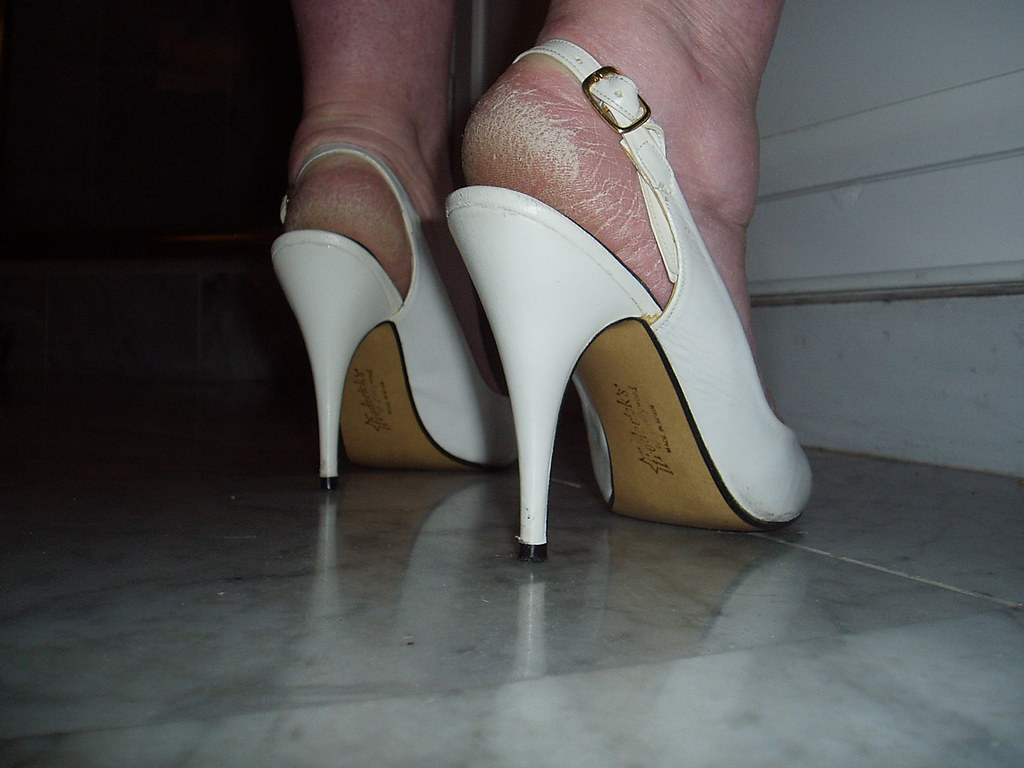
1. **High Heels**It might seem like a no-brainer, but high heels consistently top the list of footwear to avoid, a fact that often clashes with fashion preferences. While a stylish pair of heels in small doses and with a moderate height might cause minimal issues, their long-term or frequent use can instigate a range of serious problems that extend from your feet right up to your back. When your heel is elevated significantly above your toes, the mechanics of your foot are drastically altered, shifting an excessive amount of pressure onto your forefoot and toes. This isn’t just uncomfortable; it’s actively detrimental.
As podiatrists explain, this unnatural weight distribution forces the delicate structures of your forefoot and toes to bear the brunt of your body’s force. The consequences can include bursitis, synovitis, and Morton’s neuroma – all painful nerve and joint conditions. It also contributes to common complaints like ingrown toenails, corns, and calluses, as your toes are constantly pushed and squeezed. Dr. Megan Wolf, an orthopaedic surgeon, notes, “Very high-heeled shoes with pointed toes can lead to pressure of the forefoot. This pressure may lead to worsening bunions, hammertoes, and neuromas (nerve pain) as well as metatarsal head (forefoot) pain.”
Furthermore, the elevated position of the heel places continuous strain on your calf muscles, mimicking a perpetual calf raise. This can lead to significant tightness and shortening of the Achilles tendon over time, making it painful to even wear flat shoes, as highlighted by Jocelyn Curry, D.P.M. Dr. Curry also points out that three- to four-inch heels severely alter your body’s alignment, imposing extra stress on your legs, hips, and back. For anyone serious about running long distances, or even just maintaining long-term foot health, reserving high heels for very special, short-duration occasions is the only sensible approach.
Read more about: Unpacking Car Reliability: The 15 Brands Americans Trust Most (and Least) in 2025

2. **Pointed-Toe Shoes**When selecting footwear, the goal should always be a shoe that harmonizes with and supports your natural foot shape, rather than one that forces your foot into an unnatural mold. This principle is never more evident than with pointed-toe shoes, which, despite their aesthetic appeal, are fundamentally at odds with human foot anatomy. Your toes are not designed to be compressed into a triangular shape; attempting to do so can lead to a host of painful and potentially chronic conditions.
Podiatrists frequently observe that individuals who regularly wear pointed shoes present with a consistent set of complaints. Foremost among these are ingrown toenails, which result from the constant pressure on the nail edges, and painful corns and calluses, which are the body’s protective, albeit uncomfortable, response to excessive friction and compression. Dr. Wolf reiterates that the pressure from pointed toes can exacerbate existing bunions, which are bony lumps at the base of the big toe, and even contribute to the development of hammertoes, where toes contract and curl under permanently.
Dr. Curry further explains that this awkward positioning of the toes can lead to their permanent contraction, a condition known as hammertoe, which often requires medical intervention to correct. The very act of squeezing your forefoot into a restrictive toe box also contributes to general forefoot pain. For runners, who demand optimal toe splay and comfort for propulsion and stability, such footwear is an absolute no-go. Prioritizing the natural, fan-like shape of your forefoot and toes is crucial for preventing these debilitating issues and ensuring your feet can perform as intended.
Read more about: 11 Loafer Styles Women Over 50 Need Now to Elevate Every Office Look
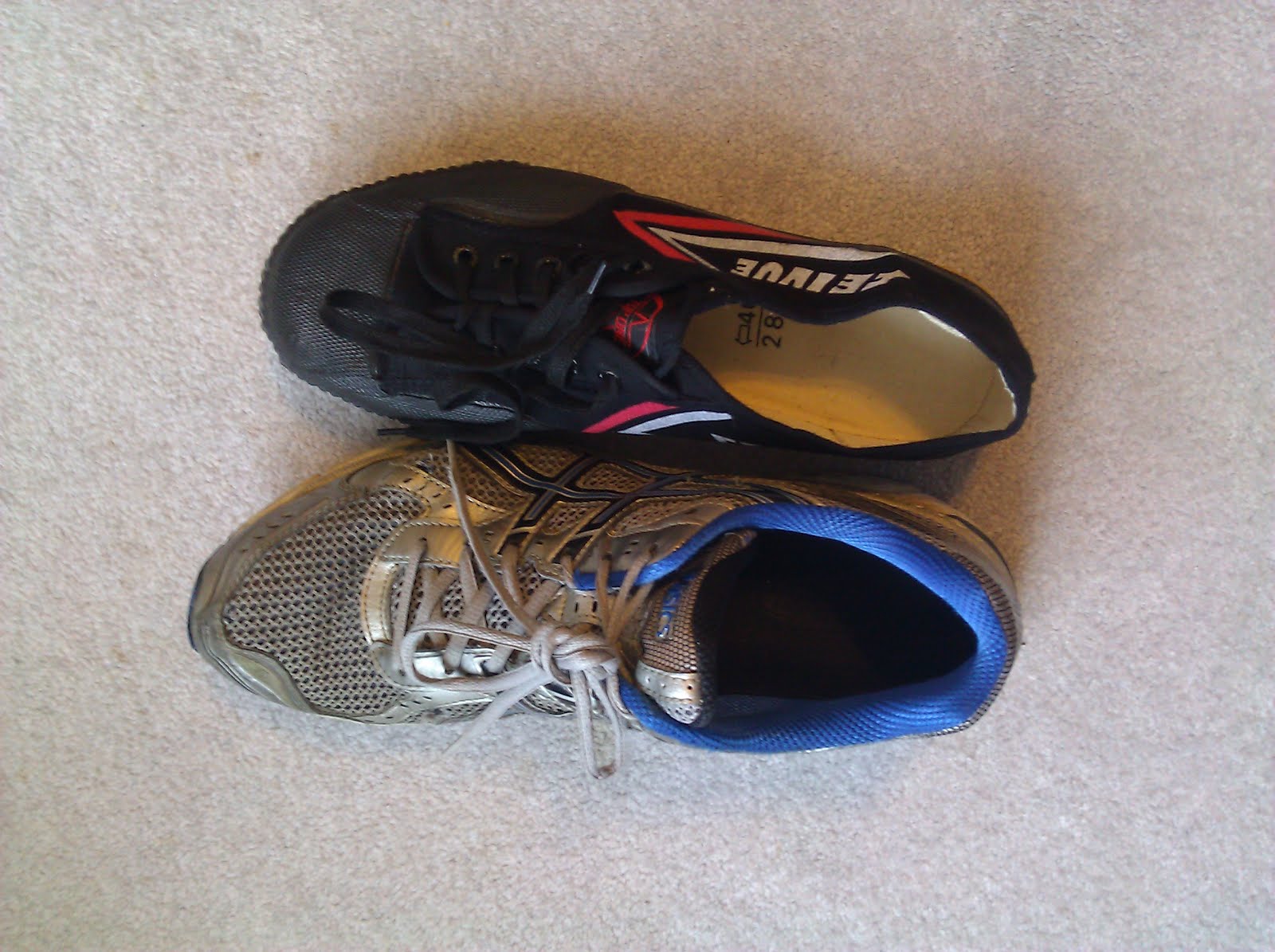
3. **Too Flexible / Minimalist Running Shoes**While flexible footwear has a specific, limited place in foot health – for example, aiding children in learning to walk by allowing natural foot strengthening – for the vast majority of the adult population, especially those engaged in long-distance running, excessively flexible or minimalist shoes often do more harm than good. These types of shoes are characterized by their minimal cushioning and lack of significant arch support, a design philosophy that, while appealing to some, can be a recipe for pain and injury without extensive preparation.
For most individuals, our feet have grown accustomed to the support and protection offered by modern footwear. When shoes are too flexible, the soft tissues and intrinsic muscles within the feet are forced to work far harder than they typically should. This increased workload can quickly lead to fatigue, pain, and inflammation, potentially culminating in conditions like plantar fasciitis. Dr. Wolf specifically cautions that “Minimalist running shoes can strain your metatarsals more if you are a high mileage runner, causing pain and metatarsal stress fractures.” This is because these shoes lack the cushioning and support needed to absorb impact over extended periods, making underlying foot and ankle issues worse.
Many seasoned runners have also shared negative experiences with overly flexible or minimalist designs. Agness, an expert runner, found Nike Women’s Free Rn Flyknit caused foot pain after 10K+ runs, with the tongue also causing discomfort. Corrie Enyart once ran a marathon in old Nike FREES, which, while feeling like a minimalist shoe, led to a severe toenail issue at mile 22-23. Jennifer Kyle, another experienced runner, admitted Nike Frees were problematic for her due to her less-than-perfect running form at the time. Tom Denniss, while liking early versions of the Nike Free 3.0, acknowledged that some later versions were ‘not so good’. Wendy Rivard mentioned how Saucony zero-drop shoes caused her pain in feet and shins, differing from her traditional preferences. If you’re considering minimalist shoes, a gradual and safe transition, coupled with significant foot and leg strengthening, is absolutely essential; otherwise, stick to more supportive options for long-distance efforts.
Read more about: Unlocking Peak Season Savings: Your Essential Guide to Finding Cheap Flights for Budget-Minded Travelers
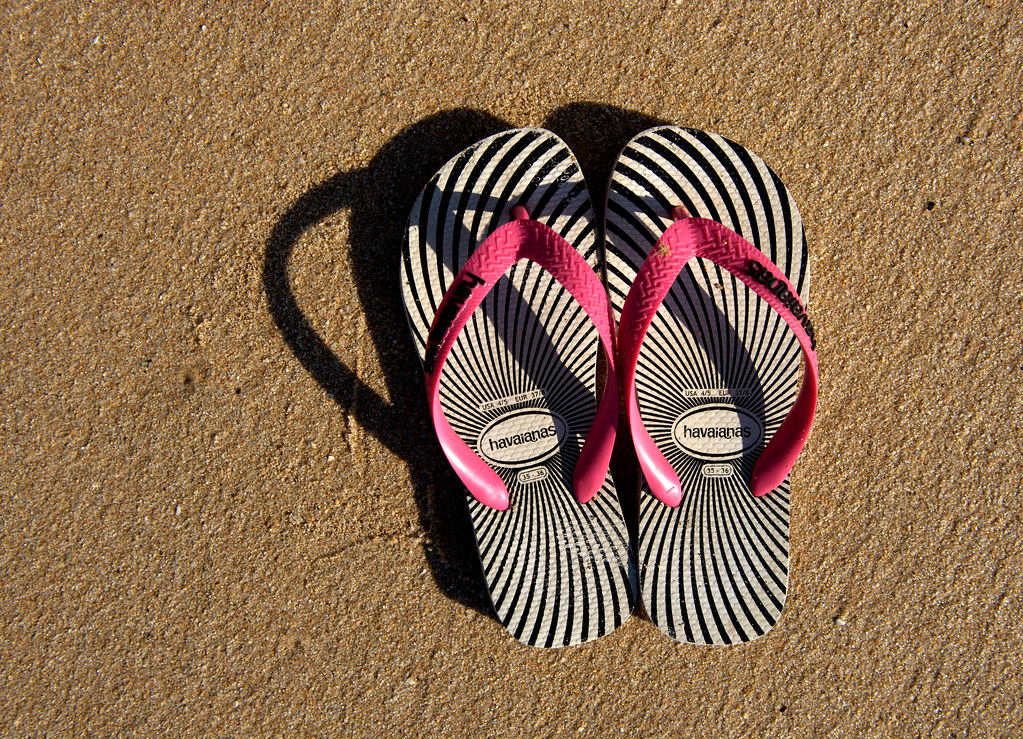
4. **Slip-on Shoes (Flip-flops / Slides / Thongs)**As comfortable and convenient as slip-on shoes like flip-flops, slides, and thongs are for a scorching summer day or a quick trip to the beach, their design is inherently unsuited for extended wear, particularly for activities involving significant walking or running. The primary flaw lies in their lack of adequate fixation, which forces your feet and toes to actively “claw” to keep the shoe on your foot with every step. This seemingly innocuous action recruits small muscles within the toes that are not typically designed for such continuous, compensatory effort.
This constant gripping leads to rapid fatigue of the foot muscles, and if this occurs over long periods, it can result in inflammation and outright injury. Dr. Wolf explains that “Flip flops don’t support or protect your feet.” She adds that their loose fit makes it easy to stub toes, leading to fractures, and increases the risk of tripping, stumbling, or ankle twists, potentially causing more serious injuries. Similarly, Dr. Curry highlights that flat flip-flops provide no support, which is a leading cause of plantar fasciitis and Achilles tendinitis. The thong style, in particular, can contribute to hammertoe as the toes repeatedly struggle to secure the foot within the shoe.
Dr. Wolf also emphasizes that slides carry many of the same risks as flip-flops, including toe stubs, tripping, or ankle injuries, due to their minimal protection and tendency to slip off easily. While these shoes have their place for short-duration, casual use – like heading to the swimming pool or lounging – they are categorically not designed to provide the necessary support and stability for long periods of time, let alone any form of distance running. Opting for shoes with proper straps and fixation is crucial for safeguarding your foot health.
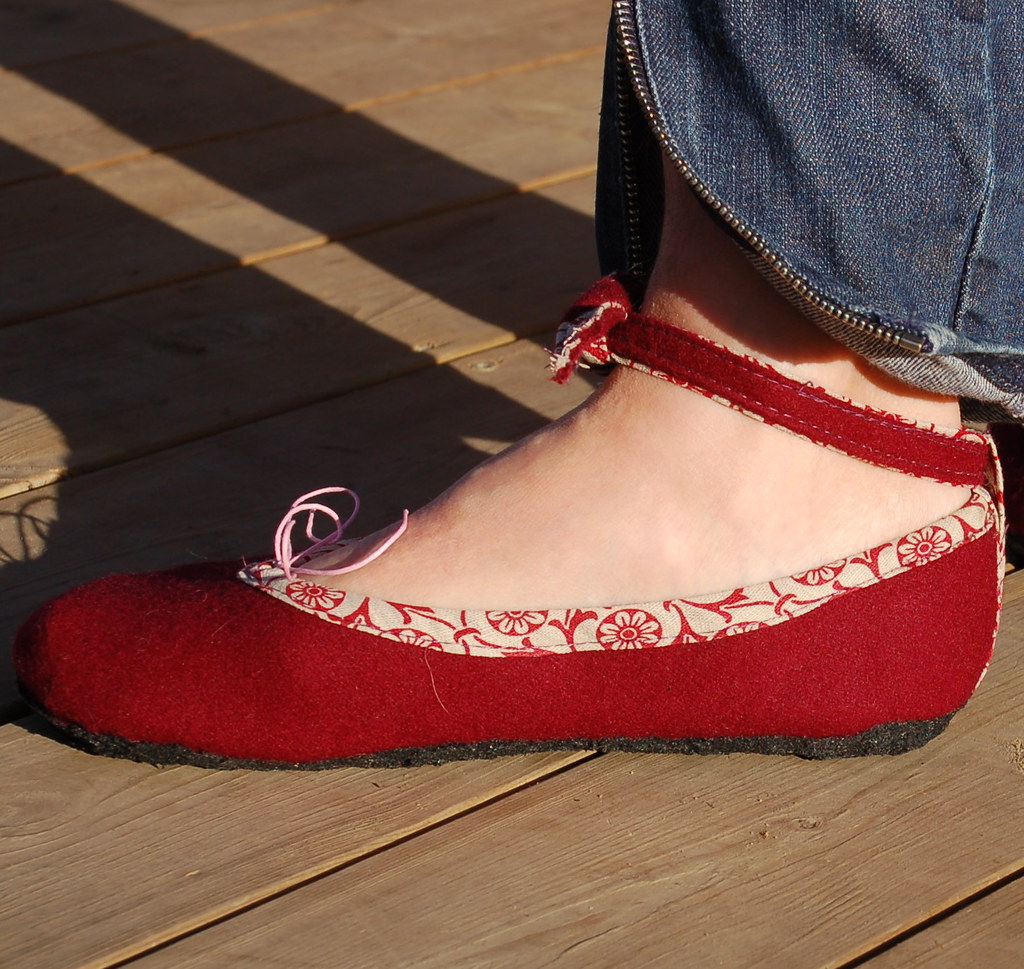
5. **Flat Sole / Ballet Flats / Canvas Shoes**Just like overly flexible footwear, shoes with a completely flat sole do have specific, niche applications. For instance, gym-goers who are lifting heavy weights often prefer a flat, stable, and even platform to optimize their form and balance. However, for the general population, and especially for activities that involve walking or running long distances, these types of shoes are largely unsuitable. They typically offer little to no arch support or cushioning, and often feature a remarkably thin sole, providing minimal protection against impact.
Wearing flat-soled shoes for extended periods, such as a full day of standing or a long walk, is highly likely to lead to significant foot pain and discomfort. This is particularly problematic for individuals with specific foot architectures, such as flat feet or high arches, as these foot types demand more targeted support that a flat sole simply cannot provide. Dr. Jocelyn Curry notes that ballet flats are equally detrimental as flip-flops because they, too, lack essential support, offering no arch system to help absorb the daily brunt of pressure on the feet.
Canvas shoes, while a popular casual choice from brands like Converse and Vans, often fall into this category. Dr. Megan Wolf acknowledges that they aren’t always an issue, but they frequently lack the necessary support and can even interfere with normal walking patterns due to their stiff, flat sole. For those who insist on wearing canvas shoes for longer durations, Dr. Wolf suggests adding insoles to provide better foot support. However, for any form of distance activity, shoes specifically engineered with appropriate cushioning and arch support are paramount to prevent discomfort and protect your feet.
Read more about: Unlock Your Style Potential: The Definitive Guide to Building a Powerful Capsule Wardrobe for Every Age and Stage
6. **Shoes Lacking Adequate Support (for foot type)**One of the most critical factors in preventing running injuries is wearing shoes that provide the right type and level of support tailored to your unique foot mechanics and gait. This isn’t a one-size-fits-all situation; what works for one runner might be detrimental to another. Shoes that lack adequate support for your specific foot type, pronation, or activity level are a primary cause of discomfort and injury, particularly over long distances.
Expert runner Ben Drew emphasizes that figuring out your shoe category is paramount: “If you overpronate, you’ll probably (but not always) prefer a pair of stability shoes. While neutral and supinating runners are usually better off with a neutral shoe.” While the adage about getting injured in the wrong shoe type has been debated, comfort is undeniably linked to the right support. Debbie Woodruff, a veteran runner, stresses that if you overpronate (roll in too much) or supinate (roll out too much), this knowledge should guide your shoe choice. She also advises taking old shoes to a specialty store, as wear patterns on the soles can reveal a lot about your gait.
Several runners have experienced issues with shoes that simply didn’t provide the support they needed. Erin Poirier, for example, won a pair of Saucony Grids that turned out to be generic training sneakers with “very little support,” making her feel like she was “running in flat cardboard boxes.” Shannon Chenoweth, who is flat-footed, found Nike shoes didn’t give her the crucial support she required, reiterating that support is vital for her. Aurie Hess recalled developing plantar fasciitis from wearing stability shoes she didn’t need, highlighting that the *wrong* kind of support can be just as problematic as *no* support. The message is clear: invest time in understanding your foot’s needs and seek professional advice to find shoes that truly support you, rather than letting your feet work harder than they should.
Navigating the vast landscape of running footwear can feel overwhelming, but empowering yourself with knowledge is your first and best defense against injury. Having explored the initial set of problematic shoes, we’re now ready to delve into seven more crucial categories that podiatrists and seasoned runners consistently advise against, especially when you’re logging those serious long-distance miles. These aren’t just about general discomfort; they’re about specific design flaws and mismatches that can sabotage your training, compromise your health, and even derail your running journey. Let’s get right into it, because your feet deserve the best foundation possible.
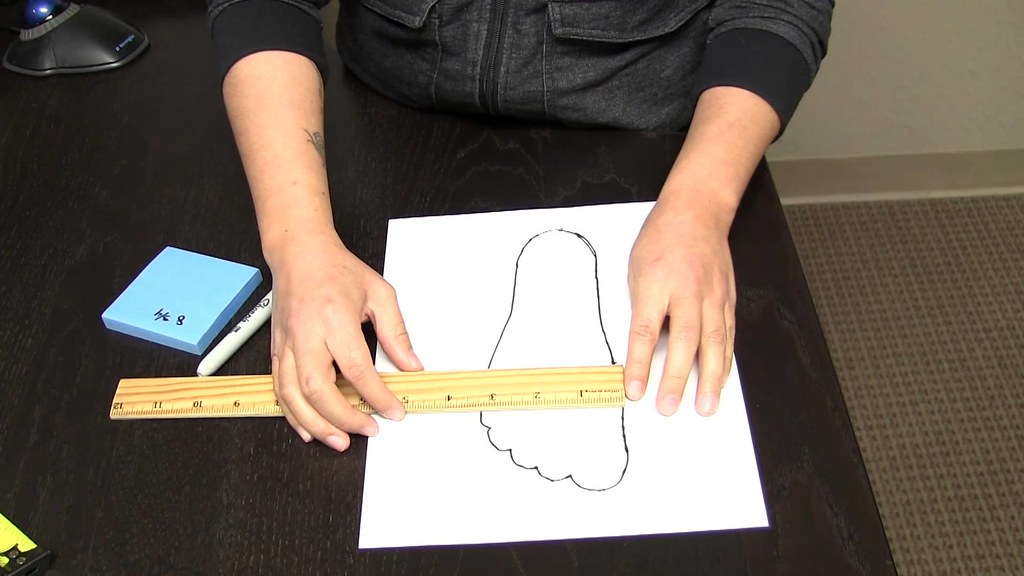
7. **Shoes with a Narrow Toe Box**While the concept of pointed-toe shoes was touched upon earlier, it’s vital to specifically address the issue of narrow toe boxes in running footwear, which can be just as detrimental. Runners require ample space for their toes to splay naturally upon impact, providing stability and propulsion. A toe box that restricts this natural movement can lead to a host of problems that extend beyond simple discomfort, impacting your performance and long-term foot health.
Several expert runners have emphatically highlighted the importance of a wide toe box. Amy Stone, for instance, states, “I look for a wide toe box.” Debbie Woodruff echoes this, noting, “For my own feet, I make sure the shoe has a wide toe box and a fairly narrow heel. Otherwise, my toes get cramped, leading to discomfort and potentially, lost toenails (and for me ingrown toenail).” This direct feedback from those who spend countless hours on their feet underscores a universal need for adequate forefoot space.
Jessica Payne makes it clear: “Wider toe box!! Cramping your toes is detrimental to the integrity of your leg’s health, believe it or not.” Sarah Schlichter, who has “long toes,” finds a “foot-shaped shoe and toebox is extremely important to me, and also plays into comfort!” The constant pressure and compression from a narrow toe box can contribute to bunions, hammertoes, ingrown toenails, and nerve pain – conditions that can severely sideline a runner. Ensuring your toes have room to move freely is not a luxury; it’s a necessity for healthy, efficient running over any distance.
Read more about: Unleash Your Inner Warrior: 15 Gladiator-Inspired Exercises for Modern Strength and Stamina
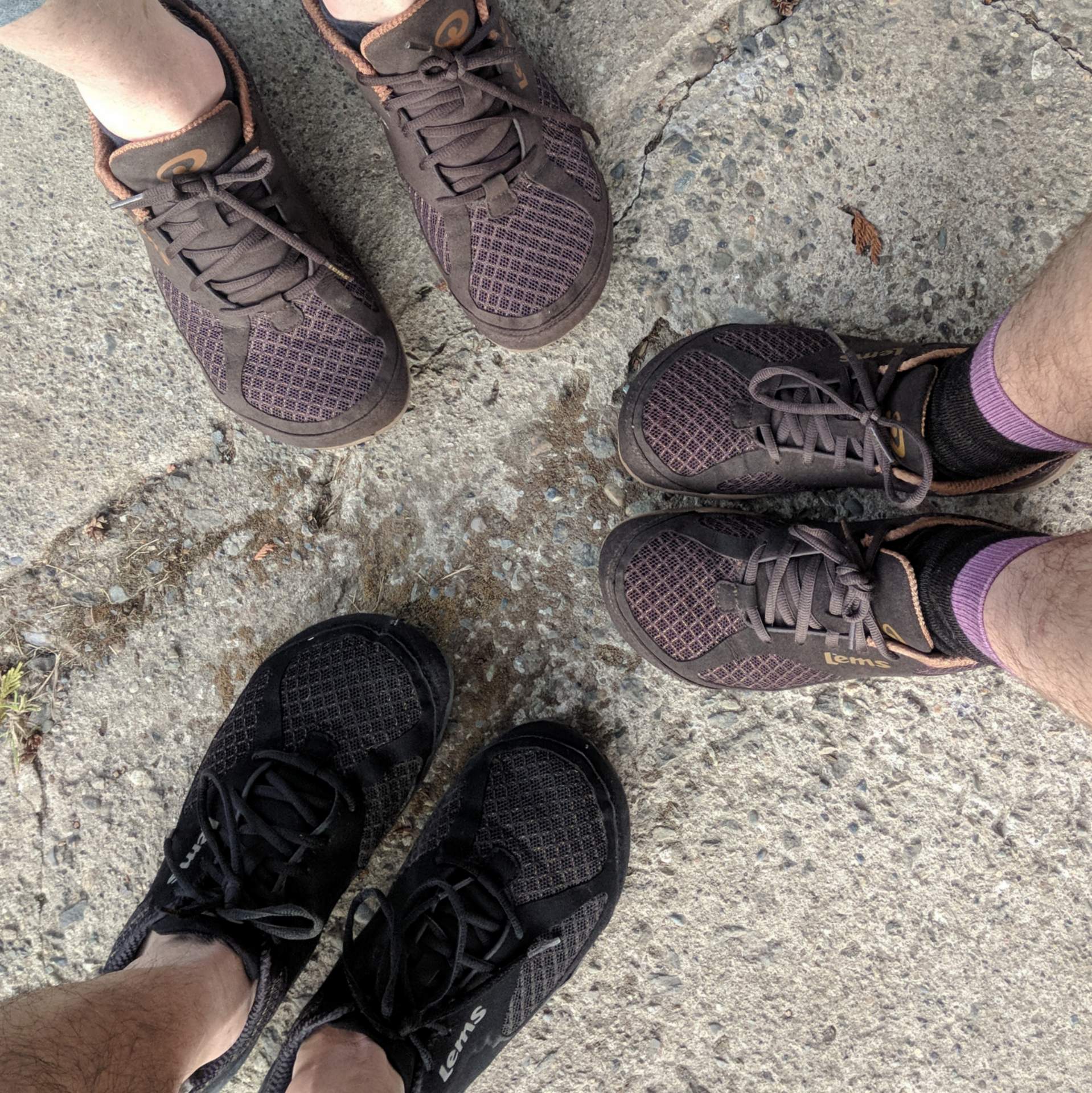
8. **Footwear with Poor Durability**For long-distance runners, the lifespan of a shoe is just as critical as its initial comfort and support. A shoe might feel great on day one, but if its structural integrity begins to degrade after only a few dozen miles, it becomes a liability. Poor durability is a hidden hazard that can quickly turn a seemingly good investment into a costly mistake, both for your wallet and your feet.
Expert runner Ben Drew shared a firsthand account of this issue with the Skechers GoRun 4. While he initially found them “cushioned and lightweight and felt good on your foot,” their flaws quickly emerged. He recounted, “But after a few runs, the outersole began to peel. And the midsole lost some of its cushioning. I don’t think I got more than 50-75 miles out of them.” This rapid breakdown means the critical support and cushioning a runner relies on disappear far too soon.
When a shoe loses its cushioning and structural integrity prematurely, it exposes your feet and legs to increased impact forces and reduced stability. This directly translates to a higher risk of fatigue, discomfort, and injury over long distances. Relying on worn-out shoes, even if they’re relatively new, can negate any protective benefits they initially offered. It’s a reminder that a truly good running shoe must withstand the rigors of sustained use, maintaining its performance mile after mile.
Read more about: The ’00s Enigma: 15 Defining Cultural Phenomena That Shaped (And Were Shaped By) The Decade
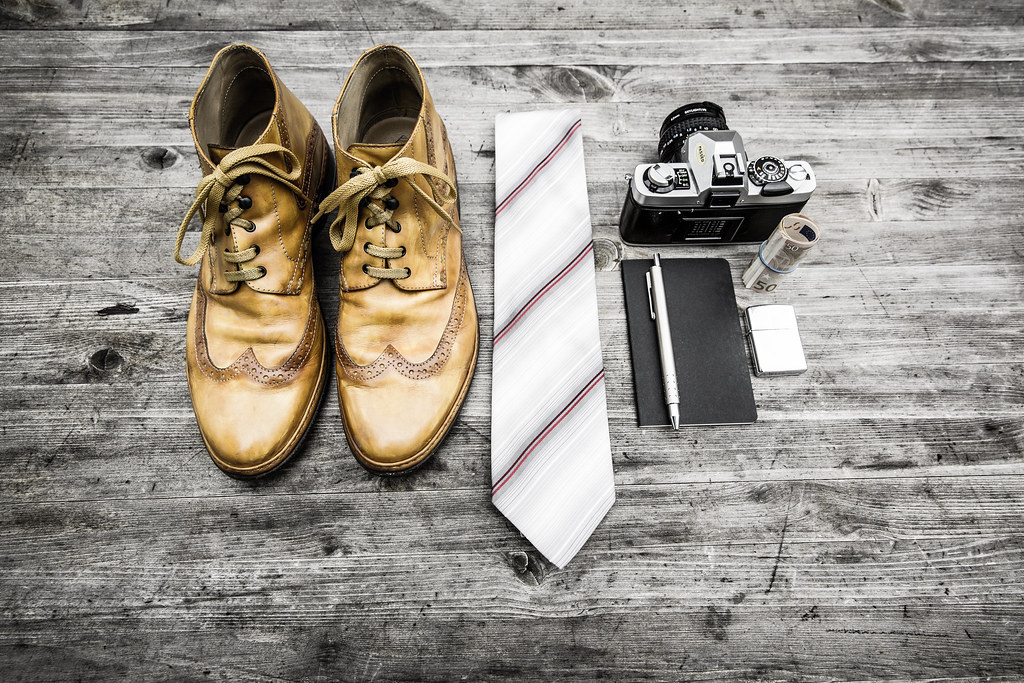
9. **Excessively Heavy or Clunky Shoes**While some runners might associate more cushioning with better protection, there’s a point where a shoe becomes so heavy or clunky that it actively hinders performance and increases fatigue. The feeling of dragging your feet, or having a shoe that feels disproportionately large, can significantly impact a runner’s stride and enjoyment, especially as the miles add up. It’s a delicate balance between protection and agile responsiveness.
Aurie Hess experienced this firsthand when she tried Brooks Ghosts after being accustomed to lighter Nike Air Pegasus. She recalled, “They felt good in the store, but when I tried running in them after I was used to the Air Pegs, it felt like I was running with big wooden boxes strapped to my feet.” This vivid description highlights how a shoe’s weight and bulk can fundamentally alter a runner’s perception and mechanics, making the effort feel exponentially greater.
Sarah Booker also recounted trying “very heavy shoes” that were recommended by a friend, noting they “had massive soles and were incredibly bouncy… but I found them almost impossible to run in!” Noelle De Guzman shared a similar sentiment about the first version of the Brooks Levitate, saying it “made my feet and legs feel dead and I had to make a conscious effort to keep my legs turning over.” For long-distance running, every ounce counts, and a clunky shoe can turn an enjoyable run into a grueling ordeal, working against your natural momentum and efficiency.
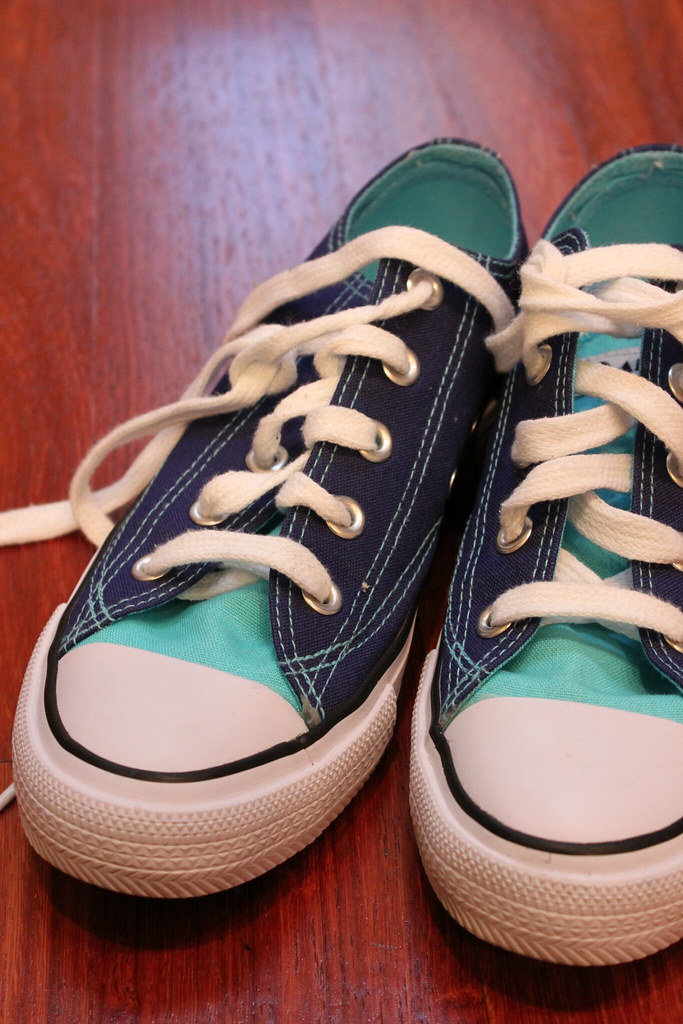
10. **Shoes Prone to Causing Blisters and Rubbing**Blisters, while seemingly minor, can quickly become a runner’s worst nightmare, turning a long-distance effort into an agonizing test of endurance. What starts as a small hot spot can escalate into a debilitating injury, affecting gait and mental resolve. Shoes that inherently create friction points or rub the skin raw are absolutely to be avoided for serious mileage.
Debbie Woodruff, an experienced runner, candidly shared her struggles: “I have never run in a Nike shoe that fit right. They rub me the wrong way, are uncomfortable, and tend to give me blisters.” Similarly, Tom Denniss recalls a pair of Reeboks from the late 80s that, despite being potentially fine for others, “rubbed the skin off my feet regularly.” These personal accounts underscore how critical the internal fit and material choices are in preventing skin irritation.
Corrie Enyart’s cautionary tale about running a marathon in old Nike FREES illustrates how even minor rubbing can lead to severe consequences, resulting in a lost toenail at mile 22-23. The cumulative effect of repetitive motion over long distances means that any small imperfection in fit or material can lead to significant issues. “Running shoes should feel good right from the start (they don’t need to be broken in),” advises Debbie Woodruff. This emphasizes that initial comfort and an absence of rubbing are non-negotiable for blister-free long-distance running.
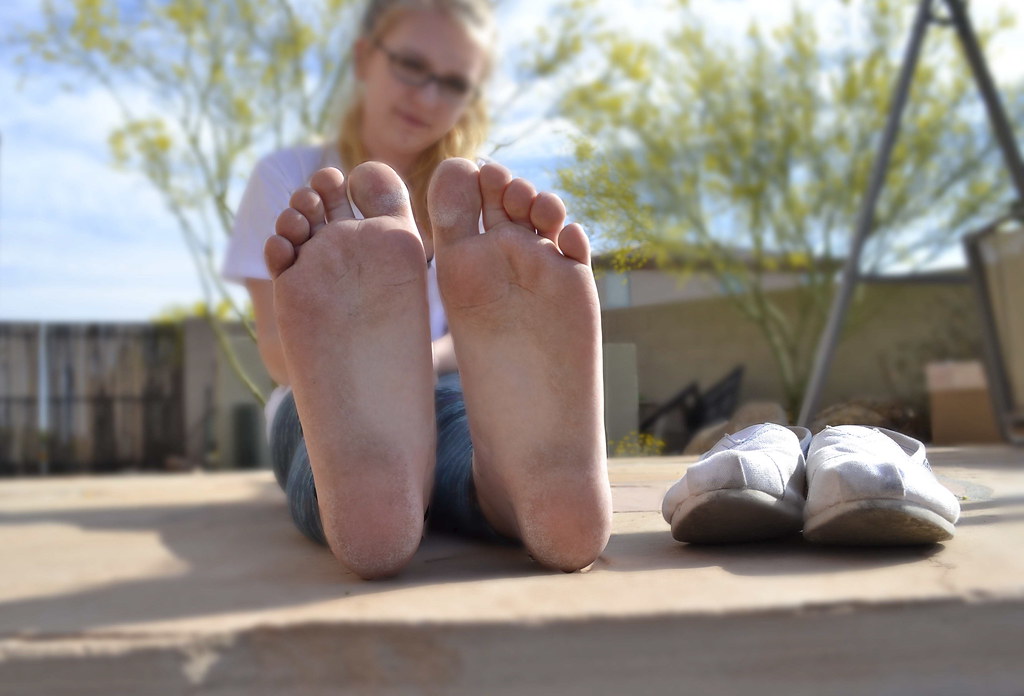
11. **Shoes That Lead to “Dead Legs” and Excessive Fatigue**Beyond discomfort or blisters, some shoes have the peculiar ability to make a runner’s legs feel heavy and lifeless, paradoxically draining energy rather than providing it. This phenomenon, often described as having “dead legs,” is a significant impediment to long-distance performance, making every step feel like a chore. It’s a clear sign that the shoe’s design is working against the body’s natural mechanics and energy return.
Noelle De Guzman, an Ironman marathoner, vividly recounts her experience with the first version of the Brooks Levitate, which she describes as the “worst shoe” for her. She ran in it only once “because it made my feet and legs feel dead and I had to make a conscious effort to keep my legs turning over.” This isn’t just about a lack of cushioning; it speaks to an imbalance in responsiveness, flexibility, or weight distribution that disrupts the natural flow and efficiency of running.
For long-distance efforts, where maintaining rhythm and conserving energy are paramount, a shoe that causes “dead legs” is a serious liability. The ideal running shoe should complement a runner’s stride, providing a smooth transition and a feeling of effortless propulsion. When a shoe demands extra effort just to keep the legs moving, it quickly leads to premature fatigue, diminishing both performance and the overall enjoyment of the run. Finding a shoe with the right balance of cushioning, responsiveness, and appropriate energy return is crucial to avoid this debilitating sensation.
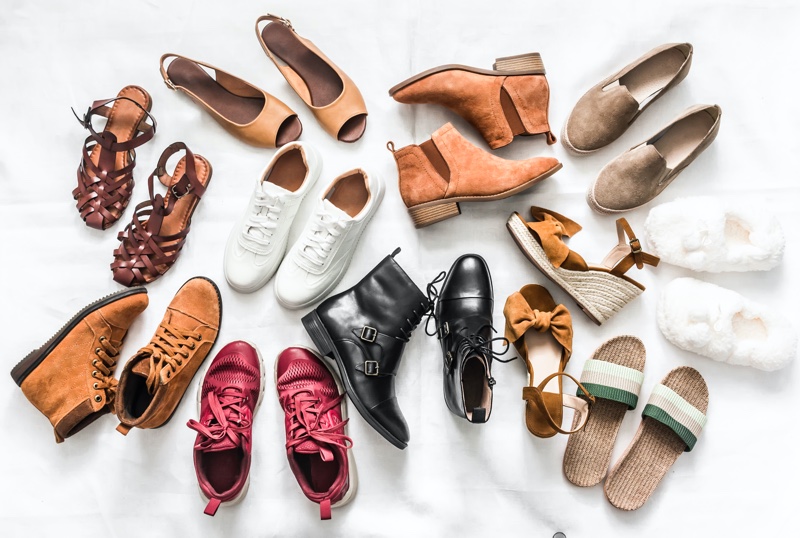
12. **Footwear Unsuited for Activity or Terrain**One of the most fundamental principles of choosing footwear is matching the shoe to the activity and terrain. Attempting to use general-purpose or road-running shoes for specialized activities like trail running or races with specific demands can be a recipe for disaster. The nuances of grip, protection, and stability vary wildly between different environments, and ignoring these differences compromises safety and performance.
Simone, a Spartan Race runner, highlights this perfectly: “As a Spartan Race runner, I need grip, or at least is what I am looking for in a shoe. That’s why today I wear the Salomon Speedcross 4.” She recalls that when she started, she “just went to a race with my simple sneakers (Nike), and the day after I had to throw them in the bin.” This dramatic outcome underscores the critical importance of specialized footwear for challenging conditions.
Erin Poirier also learned this lesson with her Saucony Grids. Despite winning them in a race, she quickly realized they were “very generic base model, lowest rung training sneakers, intended for walking around town,” not for actual running. She felt like she was “running in flat cardboard boxes” due to their lack of support. While Aurie Hess uses her “old shoes become my trail shoes,” she acknowledges not having shoes specifically made for trails, which, depending on the terrain, could lead to suboptimal performance or injury. For long distances, especially on varied surfaces, investing in shoes designed for that specific purpose is essential for optimal safety, efficiency, and protection.
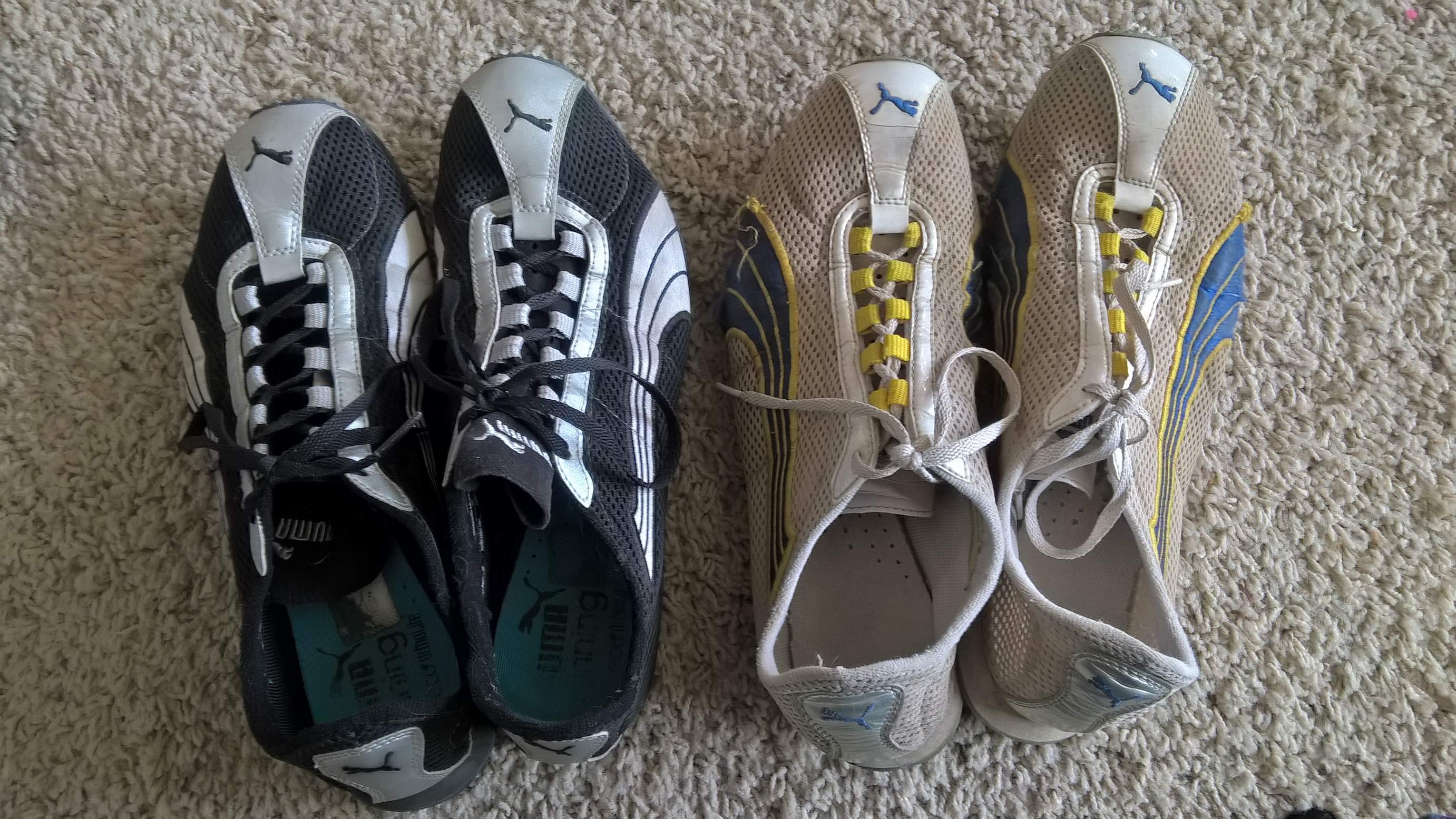
13. **Outdated or Poorly Updated Shoe Models**In the dynamic world of running shoes, manufacturers frequently release updated versions of their popular models. While these updates often aim to improve performance or comfort, they can sometimes drastically alter a beloved design, leaving loyal runners feeling frustrated and unsupported. A shoe model you once relied on might suddenly become a detrimental choice if its update misses the mark.
Amy Stone voices a common complaint among runners: “I don’t really have a worst shoe experience although I do hate it when a company updates a shoe model and it’s not anywhere near the same shoe.” Wendy Rivard shares a similar sentiment regarding a long-time favorite: “After Nike changed the shoes and they didn’t work for me any more, I tried several different brands until I settled on Asics Gel Nimbus.” This highlights the challenge of adapting when a trusted model no longer performs as expected.
Tom Denniss, while liking early versions of the Nike Free 3.0, acknowledged that “some later versions have been good (and others no so good).” This inconsistency means runners can’t blindly stick with a series. Nicole Haber offers crucial advice for dealing with this reality: “Once you find a pair you like, STOCK UP. Companies cycle styles in and out and it’s great to have what you like ready to go.” Being mindful of updates and testing new versions thoroughly is vital, as a poorly updated model can easily become one of the worst choices for your long-distance running.
**The Right Fit, Every Step of the Way**
Choosing the right footwear is undeniably one of the most critical decisions a long-distance runner can make. It’s not merely about aesthetics or brand loyalty; it’s about safeguarding your body, optimizing your performance, and ensuring every mile contributes to your well-being, not your injury risk. From the initial sensation of putting on a shoe to how it performs mile after mile, every aspect matters.
As we’ve explored these 13 common pitfalls, the overarching message remains clear: prioritize comfort, proper fit, and support tailored to your unique foot type and activity. Don’t fall victim to poorly designed shoes, tempting fashion trends, or outdated models that no longer serve you. Your feet are your foundation, and giving them the respect and protection they deserve will empower you to run stronger, longer, and injury-free.
Read more about: Lemon or Legend? The Definitive Takedown of 15 Cars That Should Have Stayed on the Drawing Board
So, before your next long run, take a moment to evaluate your footwear. Are these shoes truly supporting you, or are they inadvertently setting you up for pain? Make the informed choice, listen to your body, and invest in shoes that are truly made for the journey ahead. Happy running!

